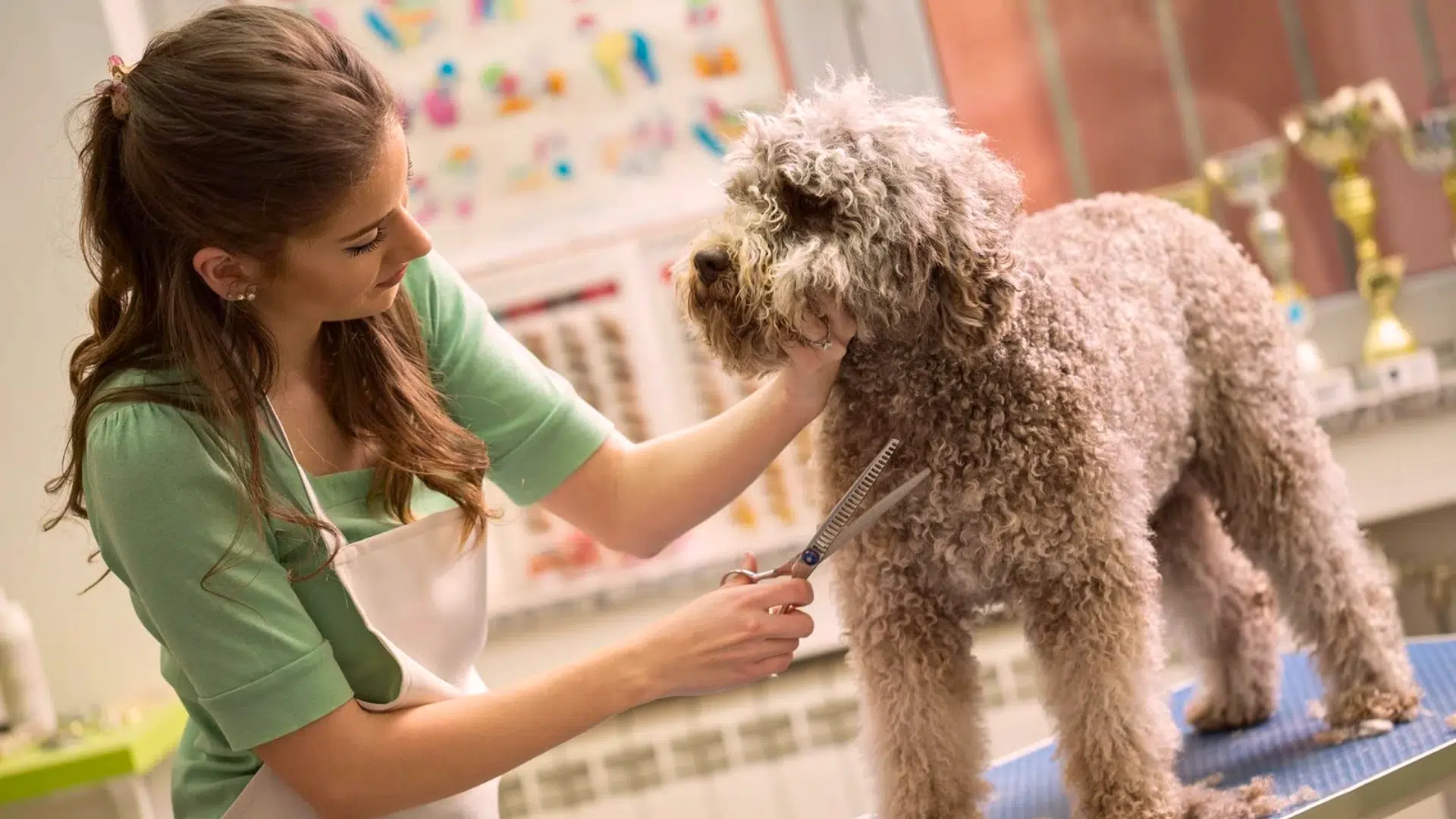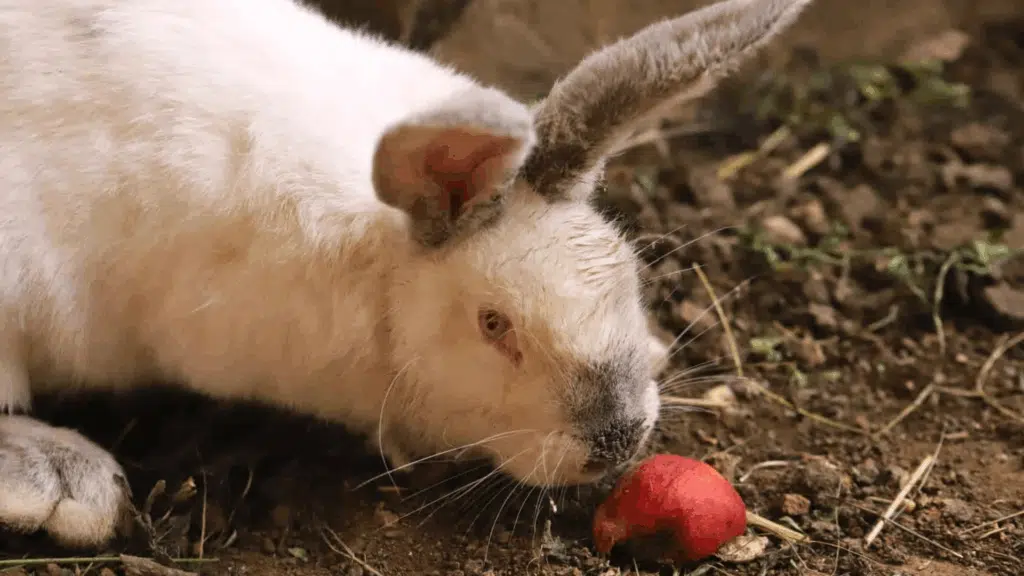The pet grooming industry is expanding fast. More pet owners now see grooming as vital care, not just an extra service.
Still, many aspiring groomers feel lost in the maze of training rules, state laws, and confusing certification details. Requirements differ across states, which makes things even trickier.
If you’re looking into becoming a dog groomer in your area or thinking about relocating, I’ll guide you through every step.
We’ll cover what licenses you may need, how to get proper training, and the best certification options to grow your career. Dog grooming can be both creative and rewarding.
Ready to turn your love for animals into a full-time job? Let’s walk through the steps to start your journey right.
What Does a Dog Groomer Do?
A dog groomer is a skilled professional who ensures dogs stay clean, comfortable, and healthy while looking their best.
Grooming goes beyond just bathing; it’s about maintaining a dog’s hygiene, health, and overall appearance.
On a typical day, a groomer bathes and dries dogs using the right shampoos and conditioners for their coat type, then brushes and detangles fur to remove mats and debris.
They also trim and style coats based on breed or owner preferences, clip nails safely, and clean ears and eyes to prevent infections.
They also keep an eye out for potential health issues like skin irritations, parasites, or unusual lumps. Each task contributes to a dog’s well-being and helps build trust between pets and their caregivers.
Steps to Become a Dog Groomer

Becoming a dog groomer requires training, patience, and passion. Follow these essential steps to build your skills, gain experience, and start a rewarding grooming career.
1. Research the Career
Before committing to dog grooming, investigate what the profession entails daily. Understand the physical demands, income potential, work environments, and career growth opportunities.
Observe experienced groomers firsthand to understand real-world conditions, watch instructional content, and explore industry resources for authentic insights.
Arrange shadowing opportunities at local salons to witness typical workflows and job demands.
Additionally, investigate regional salary ranges to determine if grooming income aligns with your financial goals and lifestyle expectations
2. Understand Your State’s Requirements
It’s important to understand your state’s requirements before starting your grooming career. Rules differ widely; some states require licenses, while others don’t.
You should check your state’s laws on business permits, insurance, and certifications to stay compliant.
Contact the state licensing board or the Department of Agriculture for accurate details.
If you plan to open your own grooming salon, research local zoning laws, permits, and insurance coverage to ensure your business operates legally and smoothly from the start.
3. Take a Grooming Course
Enroll in a formal grooming education program through an accredited school, vocational center, or online platform.
Quality programs typically last 2-18 weeks and cover essential techniques, including bathing, brushing, cutting, breed standards, safety protocols, and business basics.
Compare multiple grooming schools based on curriculum, cost, duration, job placement assistance, and student reviews.
Verify the program covers both technical skills and practical business knowledge relevant to your career goals.
4. Get Hands-On Experience
Practical experience is invaluable and often required before working independently. Seek apprenticeships, entry-level bather positions, or assistant roles at established grooming salons.
Working with experienced groomers allows you to refine techniques, learn customer service, and build confidence. Most groomers need 6-12 months of supervised practice before working solo.
Apply for bather or grooming assistant positions at local salons to learn while earning income.
Volunteer at animal shelters to practice basic grooming skills on dogs needing care.
5. Earn Certification
Organizations like the National Dog Groomers Association of America (NDGAA) and International Professional Groomers (IPG) offer respected certification programs.
Testing includes written exams on breed standards and practical demonstrations. Certification enhances credibility and can increase earning potential.
Choose a nationally recognized certification program that aligns with your career goals and specialty interests.
Prepare thoroughly by studying breed standards, practicing test cuts, and reviewing safety protocols before examination.
6. Build a Portfolio
I always suggest you build a portfolio to show your progress and skills. Take clear before-and-after photos of different breeds and coat types to highlight your work.
Good lighting and simple backgrounds make your results stand out.
A strong portfolio helps employers and clients see your abilities and growth.
You can also share your photos on social media platforms like Instagram or Facebook to attract new clients and grow your grooming business naturally.
7. Find Employment or Start a Business
Decide whether to work for an established salon, mobile grooming service, pet store, veterinary clinic, or launch your own business.
Employment offers steady income, mentorship, and existing clientele, while entrepreneurship provides autonomy and higher earning potential but requires significant investment.
Apply to multiple grooming salons, gaining interviews to assess workplace culture, compensation, and growth opportunities.
If self-employed, create a detailed business plan including startup costs, pricing structure, marketing strategy, and financial projections.
8. Market Your Services and Build Clientele
Actively promote your grooming services through multiple channels, including social media, local advertising, partnerships with veterinarians, pet stores, and word-of-mouth referrals.
Exceptional customer service, reliability, and quality work generate repeat business and referrals, your most valuable marketing tools for sustainable growth.
Establish social media presence by posting regular content, client testimonials, grooming tips, and before-and-after transformations.
Network with local veterinarians, trainers, and pet businesses who can refer clients to your services.
9. Keep Learning and Improving
The grooming industry constantly evolves with new techniques, products, breed standards, and styling trends. Commit to lifelong learning through workshops, trade shows, and online courses.
Attend competitions to observe top groomers, join professional associations for networking and resources, and seek mentorship from experienced professionals.
Attend at least one grooming conference or workshop annually to learn advanced techniques and industry trends.
Join professional organizations like NDGAA or IPG for access to educational resources, networking, and industry updates.
Essential Skills and Qualities Every Dog Groomer Needs
Being a great dog groomer takes more than trimming skills; it calls for patience, compassion, focus, and strength. I’ve learned that staying calm and gentle helps dogs feel safe, especially when they’re anxious or fidgety.
Attention to detail is just as vital since even small mistakes can affect a pet’s comfort and look.
Grooming also demands physical stamina; standing, lifting, and working long hours require energy and care. Communication plays a key role, too.
Clear, respectful talks with pet owners build trust and understanding. Most importantly, compassion ties it all together.
Treating every dog with empathy and kindness makes grooming a positive experience for both of you.
When you combine these skills, patience, precision, strength, communication, and care, you’ll not only groom better but also build lasting relationships with pets and their owners.
Dog Grooming Certification and Licensing Made Simple
Getting certified and licensed as a dog groomer boosts your credibility and career opportunities. Learn the simple steps, key requirements, and certifications needed to start professionally.
- Need for Certification: Not legally required in most states, but it improves your credibility, client trust, and job prospects.
- Popular Certification Bodies: NDGAA (National Dog Groomers Association of America), PG (International Professional Groomers), and ISCC (International Society of Canine Cosmetologists).
- Texas Requirements: No state license needed, but local permits and health rules must be followed.
- Local Licensing (General U.S.): Check your city or county for grooming or business permit requirements.
- Recommended Training: Take a certified grooming course and gain hands-on experience.
- Continuing Education: Attend workshops or online classes to stay updated on new tools and techniques.
- Career Benefit: Certified groomers usually earn more and build stronger client relationships.
Job Opportunities and Career Growth
A career in dog grooming offers plenty of opportunities for both beginners and experienced professionals. As pet care demand rises, skilled groomers can find stable and flexible work options.
Many start by working in grooming salons, pet spas, or retail stores to gain experience and grow their client base.
Others join veterinary clinics or animal shelters, where grooming helps maintain animal health and comfort.
Mobile and home-based grooming services are also gaining popularity because they offer flexibility, independence, and convenience for both groomers and pet owners.
Once you’ve built solid skills and loyal clients, starting your own grooming salon or mobile unit can be very rewarding.
It gives you control over pricing, branding, and the services you offer, creating a career that’s both creative and fulfilling.
Tips for Success as a Dog Groomer
Succeeding as a dog groomer requires more than just technical skill; it’s about building trust, delivering quality service, and continuously improving your craft:
- Prioritize the Dog’s Comfort: Always make the dog’s safety and comfort your top priority. A calm, gentle approach helps nervous pets relax and builds owner confidence in your care.
- Keep Learning New Techniques: Stay updated with modern grooming styles, tools, and safety methods. Continuous learning helps you stand out and provide better results for your clients.
- Build Strong Client Relationships: Friendly communication and reliability create loyal customers. Listen to owner preferences, provide honest advice, and deliver consistent results to earn repeat business.
- Maintain Cleanliness and Hygiene: A clean workspace reflects professionalism and ensures safety. Disinfect tools, tables, and equipment after every grooming session to prevent infections.
- Manage Time Efficiently: Balance quality and speed by creating a routine that keeps you on schedule without compromising care or attention to detail.
- Stay Patient and Positive: Some dogs can be anxious or difficult to handle. Patience and calm energy make a huge difference. Positive interactions turn every session into a success.
Conclusion
Becoming a dog groomer is an exciting and achievable goal that blends passion, patience, and skill development. Every groomer began just like you, curious, eager, and ready to start.
This career offers flexibility and room to grow, whether you choose to work in established salons, open your own business, specialize in show grooming, or provide mobile services in your community.
The key is to start small, stay consistent, and keep improving your skills with experience.
Begin by checking your state’s requirements, then enroll in a certified grooming course to gain hands-on training.
With dedication and love for animals, you can build a fulfilling, flexible career that lets you make pets look and feel their best every single day.








